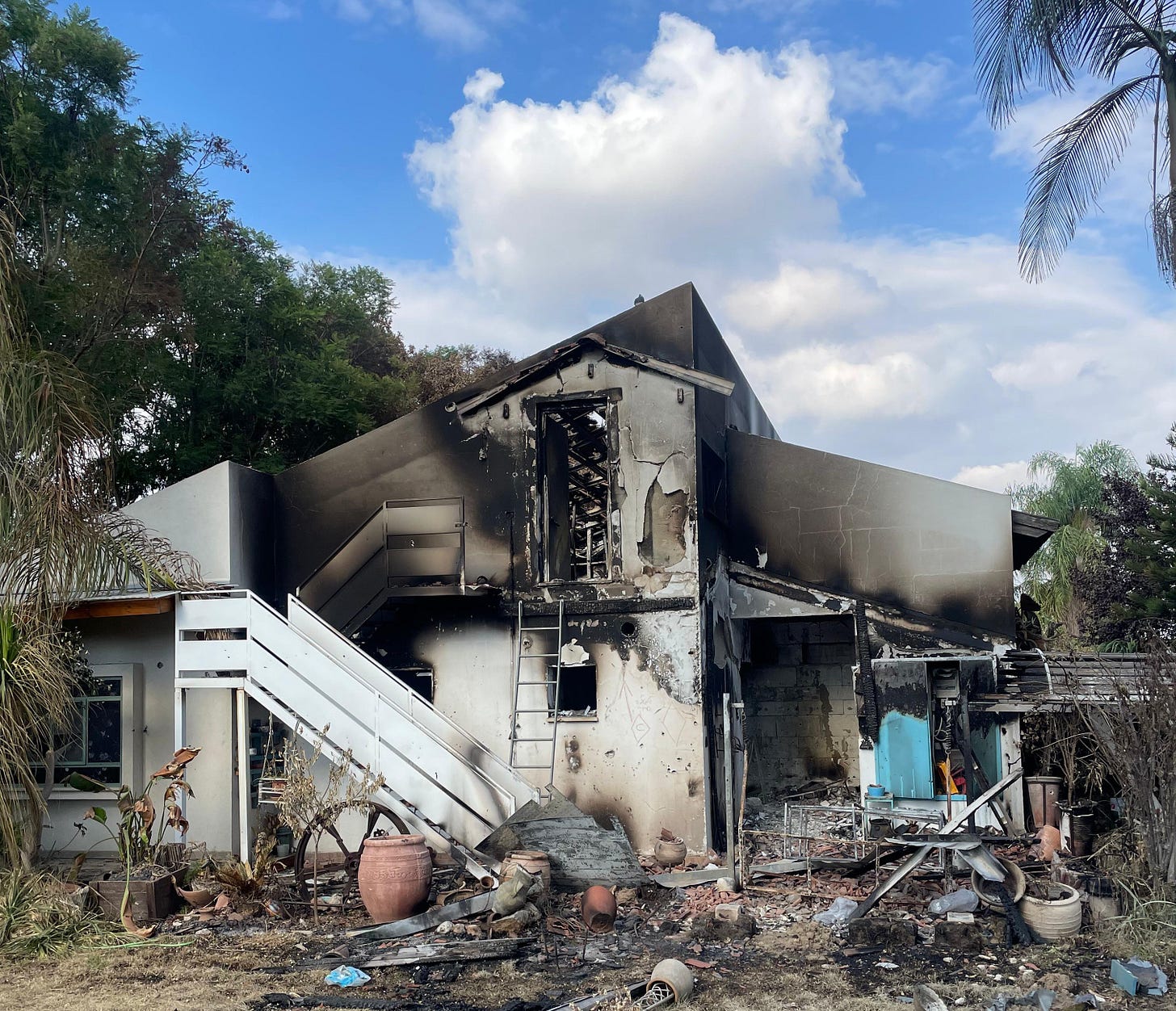The Day I Learned What Death Smells Like
I had heard about the smell of death before, but I never quite knew what it was. Now I did. It hung over the entire kibbutz, thick and nauseating.
Editor’s note: As we mark the second anniversary of the October 7 attacks, many of us find ourselves reflecting on that awful day and its aftermath. Even then, it was clear that nothing — including we ourselves — would ever be the same again.
Nine days after the attacks, I traveled to Kibbutz Be’eri to bear witness to the horrors of that day. I later wrote about what I experienced and published the account in The Jerusalem Post. I share that account with you today.
May the memory of all who lost their lives that day and in the war that has ensued be a blessing and may all the remaining hostages be returned swiftly to their families. — A.M.
Kibbutz Be’eri is remarkably peaceful.
Established in 1946, the community had a population of 1,047 in 2021. Verdant lawns stretch between small public buildings and houses shielded by leafy trees. The kibbutz is home to a printing press that serves as the community’s main source of income, as well as a veterinary clinic and a cycling center, and it is surrounded by agricultural fields. In wintertime, families from across the country flock to the adjacent Be’eri Forest to see the bright red anemones that blanket the area. Some years ago, the community — a bastion of liberalism and home to several prominent peace activists — established a fund to help support Palestinian families just a couple of miles away in Gaza.
At 6:30 a.m. on Saturday, October 7, Hamas launched a heavy barrage of rockets from Gaza into southern Israel. Using the rocket fire as cover, an estimated 2,900 Hamas terrorists utilized bulldozers to tear through the border fence and then drove through on motorcycles and pickup trucks. They then fanned out, making their way directly to kibbutzim and towns throughout the border area.
When they got to Be’eri, they immediately killed the community’s emergency readiness squad and set up an ambush at the main gate to prevent Israeli forces from coming to the rescue. Then approximately one hundred terrorists drove into the kibbutz, dismounted their vehicles, and started going house to house, killing everyone they saw. They wrenched open the trunks of parked cars, removed spare tires, set them on fire, and rolled them into houses in order to burn the families inside to death. Anyone who fled the flames was shot. They fired rocket-propelled grenades at fortified safe rooms in order to get to the families huddled inside.
Within hours, large numbers of soldiers arrived and, after sustaining significant losses, overpowered the terrorists at the kibbutz gate. A fierce gun battle erupted. The army sent several tanks into the community and started shelling some of the houses from which terrorists were firing. The firefight stretched into the middle of the next day, until all the terrorists were neutralized.
A friend of mine who scrambled to Be’eri with his reserve unit that day said it looked like something out of a horror movie. “Never in my life did I imagine that humans could be so cruel to each other, and that I would see it,” he told me. He described seeing bodies everywhere, smoke wafting through the kibbutz.
At least 104 members of the community — approximately ten percent of its total population — were murdered that day, along with six police officers. Multiple residents were kidnapped by Hamas and are being held hostage in Gaza; we still don’t know exactly how many.
I visited Be’eri earlier this week with a colleague, part of a group of editors from Israeli media outlets invited to tour the site.
As we made our way from Jerusalem, we saw long lines of parked cars outside army bases, left there by reservists reporting for duty. Nearing the Gaza border area, we had to pass through several checkpoints, and the IDF’s presence became increasingly visible. As we approached Be’eri, we drove past neighboring Kibbutz Re’im, where the terrorists had targeted a music festival, killing at least 260 young people. Many of the victims’ cars remain on the side of the road.
Read the full piece in The Jerusalem Post




Thank you for this.
Avi, having visited the places you mention in January 2024, we have no escape from the torture and pain of which you write, that so many suffered and bore witness. I have shared your article with those non Jews I know, some who need to know what happened .. thank you .. 🎗️🎗️🎗️